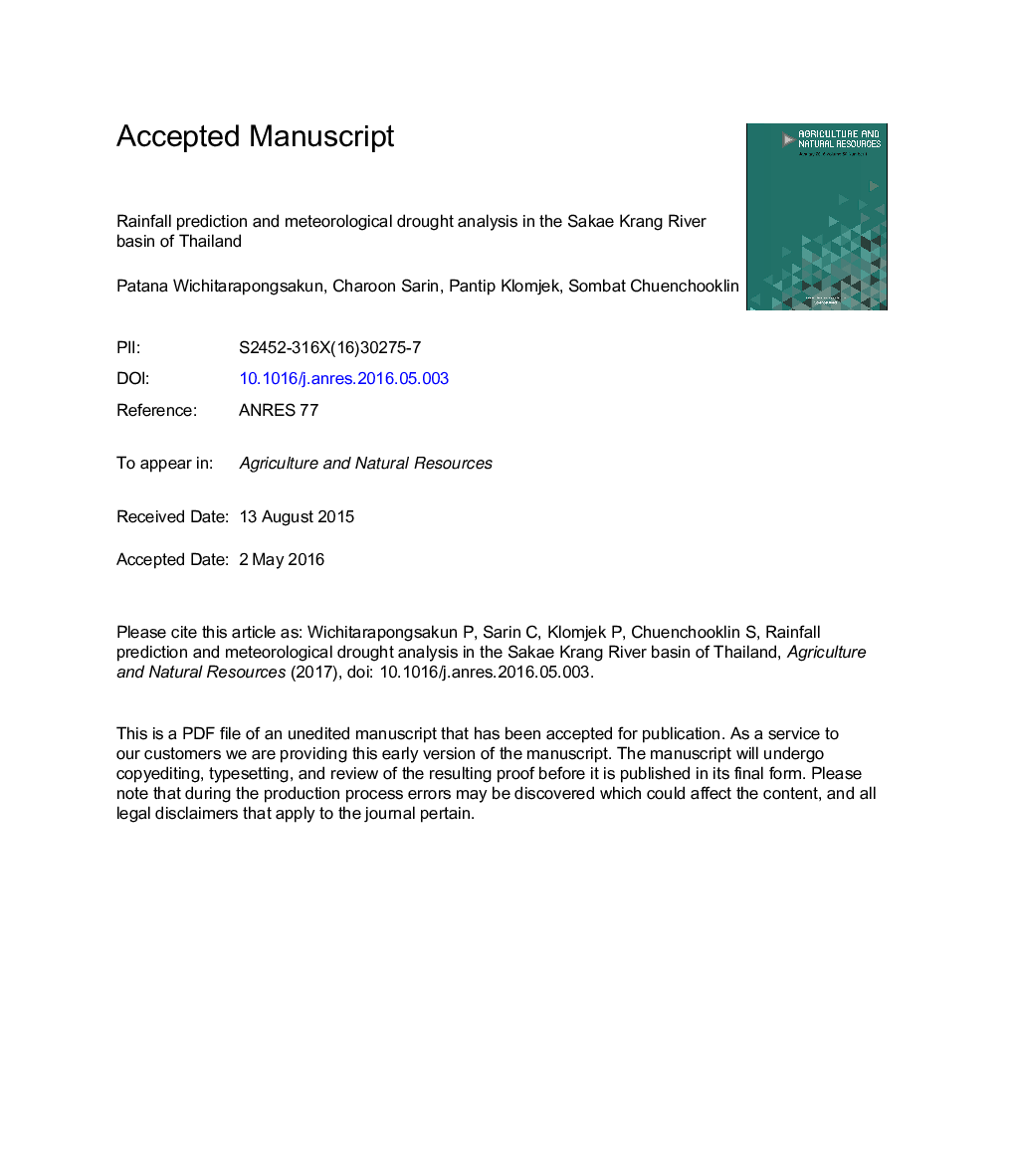| Article ID | Journal | Published Year | Pages | File Type |
|---|---|---|---|---|
| 6538132 | Agriculture and Natural Resources | 2016 | 21 Pages |
Abstract
Rainfall was predicted and used to analyze the severity levels of meteorological drought in the Sakae Krang River basin. Three forecasting models based on the Time Series Prediction technique, Single Moving Average, Simple Exponential Smoothing and Double Exponential Smoothing (Holt's model) were used to predict rainfall using the data collected from five rain gauge stations between 1970 and 2014. The minimum mean percentage error (MPE) score was used to indicate the accuracy of prediction. A standardized precipitation index (SPI) was used to indicate the drought severity levels in the Sakae Krang River basin between 1970 and 2015. The Simple Exponential Smoothing model produced the most accurate rainfall prediction followed by Double Exponential Smoothing (Holt's model) and the Single Moving Average model with MPE scores of 28%, 31% and 36%, respectively. The drought analysis results indicated that from 1970 to 2014, there was no clear trend in meteorological drought in the Sakae Krang River basin. In 2015, the meteorological drought severity level analysis of the sub-basins of the Sakae Krang River basin was graded as moderate drought for the lower part of Mae Nam Sakae Krang 1 and mild drought for Nam Mae Wong, the lower part of Mae Nam Sakae Krang 2, Khlong Pho and Huai Thap Salao with SPI scores of â1.01, â0.97, â0.91, â0.57 and â0.32, respectively.
Related Topics
Life Sciences
Agricultural and Biological Sciences
Forestry
Authors
Patana Wichitarapongsakun, Charoon Sarin, Pantip Klomjek, Sombat Chuenchooklin,
